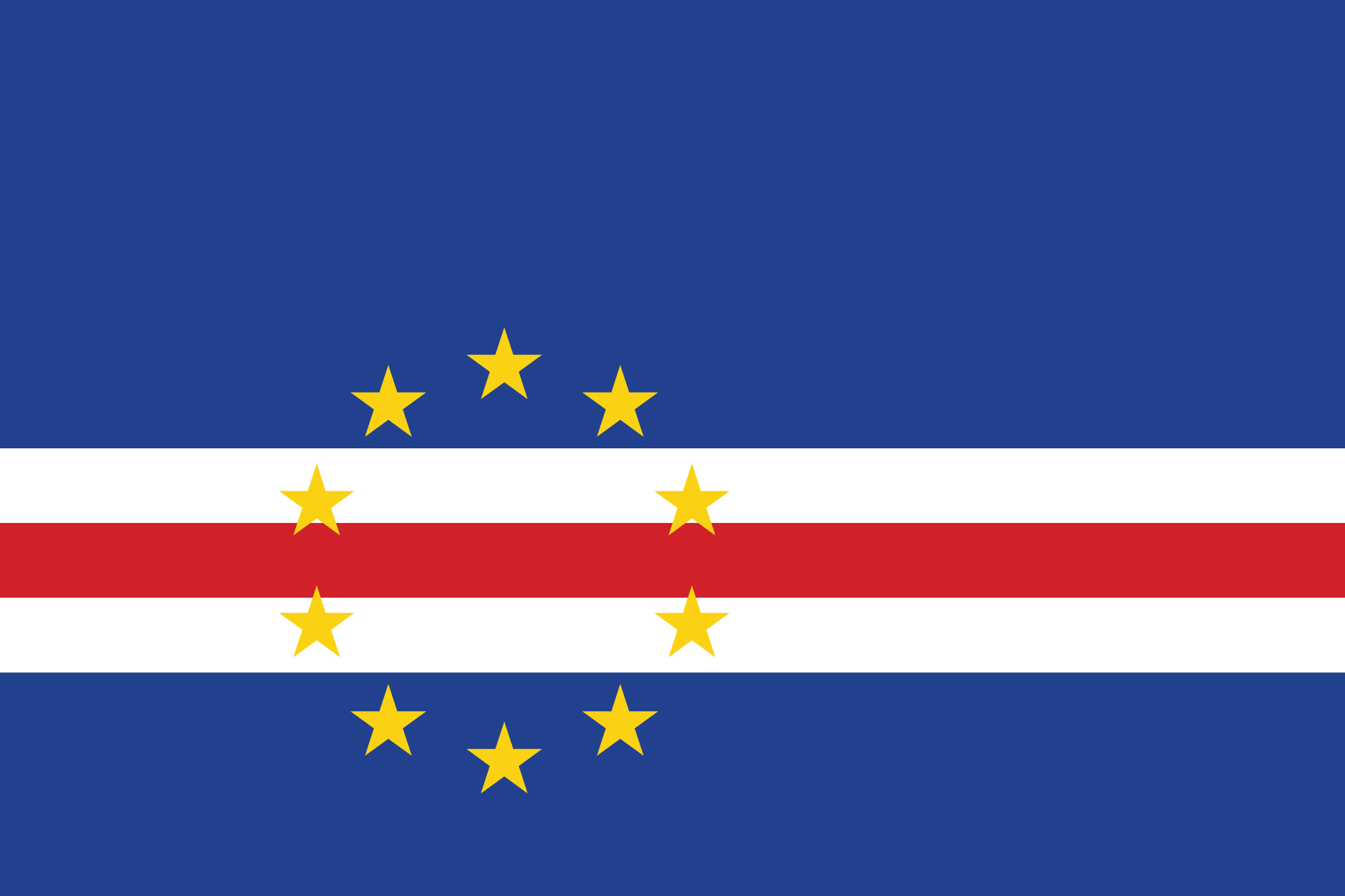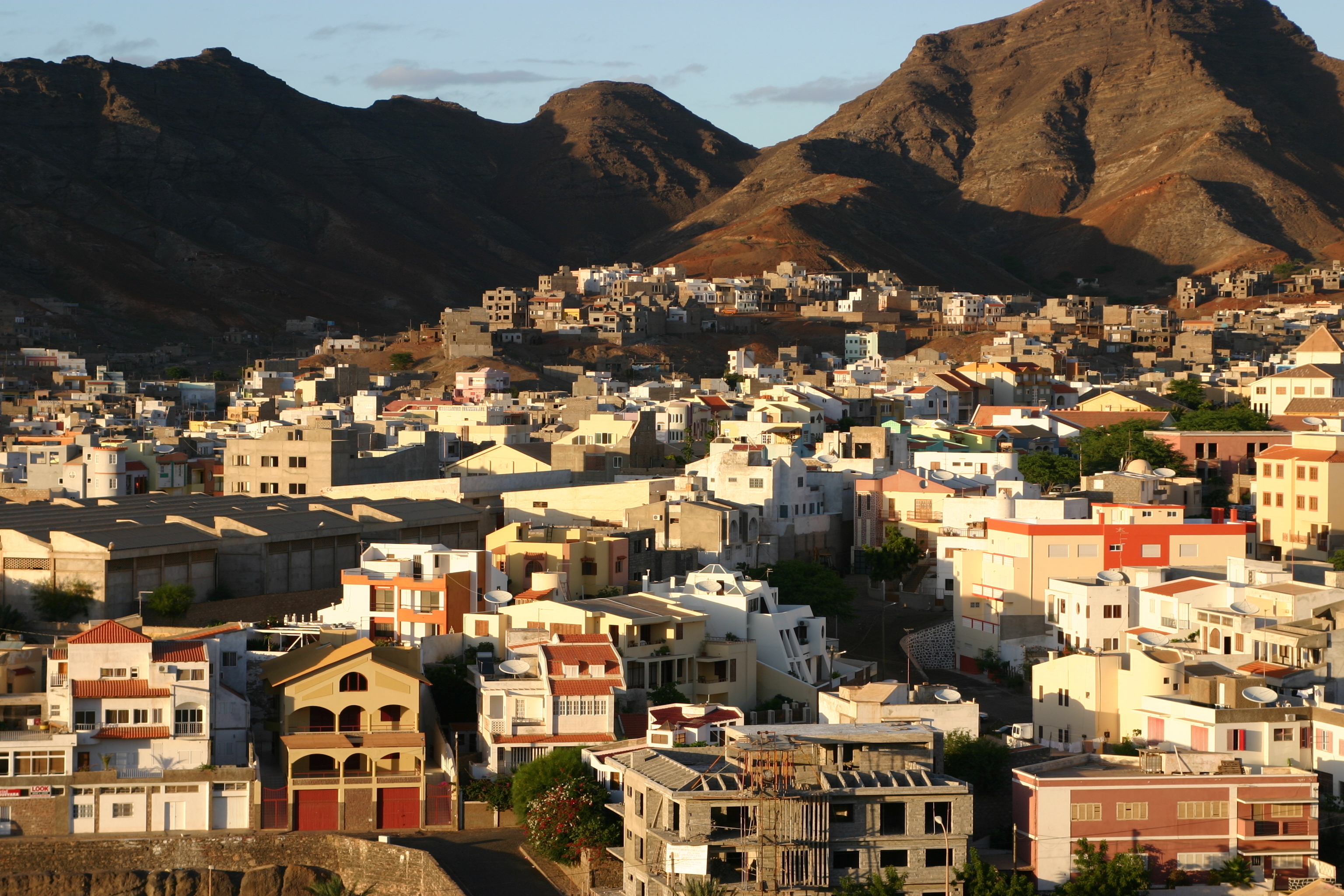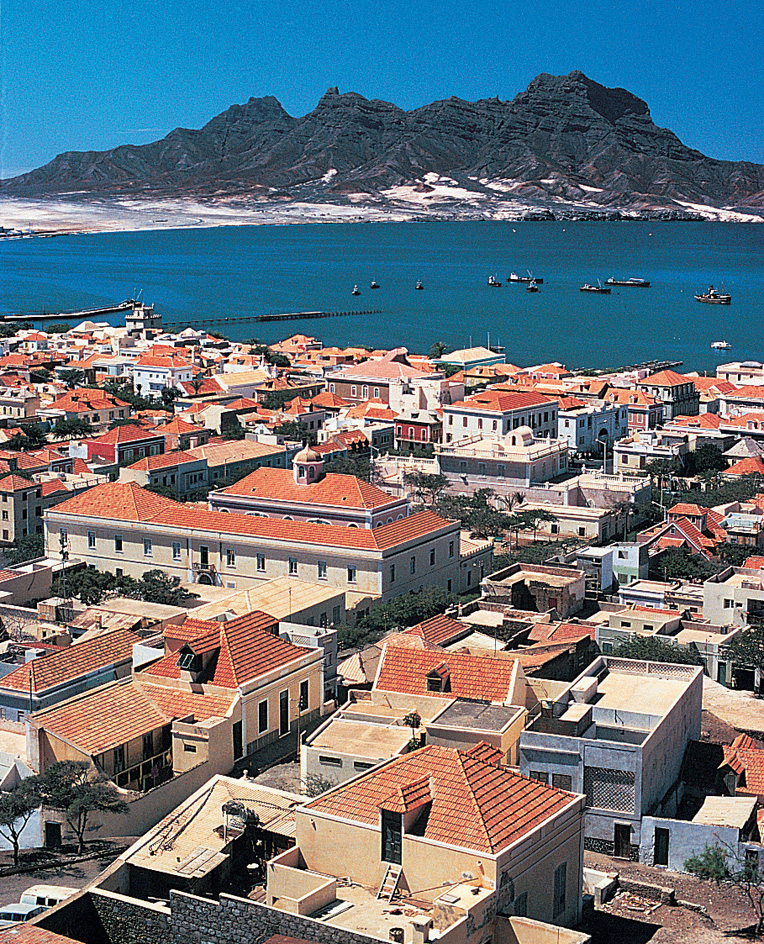Cabo Verde << KAH boh VAIR day or KAH boh VAIR duh >>, also known as Cape Verde << kayp VURD >>, is an African country that consists of 10 main islands and 5 tiny islands. It lies in the Atlantic Ocean, about 400 miles (640 kilometers) west of Dakar, Senegal, on the African mainland.

Cabo Verde has a total land area of 1,557 square miles (4,033 square kilometers). São Tiago, the largest island, covers 383 square miles (991 square kilometers). Santo Antão is the second largest island, followed by Boa Vista, Fogo, São Nicolau, Maio, São Vicente, Sal, Brava, and Santa Luzia. Santa Luzia and the five islets are uninhabited.
Praia, the capital and largest city, is on São Tiago. It has a population of about 140,000 and is a major seaport and trading center. Portugal ruled the islands from the 1460’s until they gained independence in 1975.
Government.
Cabo Verde is a republic. The president is chief of state and is elected by the people. The people also elect a legislature called the National Assembly. The legislature nominates a prime minister, who is appointed by the president. The prime minister is head of the government and recommends a cabinet of ministers, which is appointed by the president. Assembly members, the prime minister, and the president all serve five-year terms. Cabo Verde has two major political parties, the Movement for Democracy (MPD) and the African Party for the Independence of Cabo Verde (PAICV).

People.
About 70 percent of Cabo Verde’s people have mixed African and Portuguese ancestry. Most of the rest of the people are descendants of Africans.
Cabo Verde has an extremely low standard of living because many of its people cannot find work. The country’s chief industries, farming and fishing, provide workers with only a bare income. Famines have occurred frequently through the years, and many of the people are undernourished. Since the mid-1900’s, hundreds of thousands of Cabo Verdeans have emigrated to Brazil, Portugal, the United States, and other countries.
The official language of Cabo Verde is Portuguese. But most Cabo Verdeans speak the national language, Crioulo. Crioulo is a local dialect based on Portuguese and various African languages. Most Cabo Verdeans are Roman Catholics, but many practice animism, the belief that everything in nature has a soul.
The law requires children from ages 7 through 13 to attend school. About 90 percent of the people 15 years of age or older can read and write.
Land and climate.
The islands of Cabo Verde were formed by volcanic eruptions 21/2 million to 65 million years ago. The only remaining active volcano is on Fogo Island. Most of the islands have rugged, mountainous land, with tall cliffs along the coastlines.

Cabo Verde has a warm, dry climate, with average annual temperatures that range from 68 °F (20 °C) to 77 °F (25 °C). A continual shortage of rain makes most of the land too dry to support plant life.
Economy
of Cabo Verde relies mainly on service industries. Before Cabo Verde became independent in 1975, it relied almost entirely on Portugal for economic support. Since then, it has received food aid from the United Nations and financial aid from various countries. Remittances (money sent home) from Cabo Verdeans working abroad are a helpful source of national income.
Agriculture employs much of the labor force. However, because of poor rainfall and occasional droughts, the country needs to import most of its food. Cabo Verde’s chief crops include sugar cane; bananas and other fruits; and such vegetables as sweet potatoes and tomatoes. Farmers also raise beef and dairy cattle, goats, and hogs.
Fishing and mining play a small role in Cabo Verde’s economy. Tuna is the main catch. The country’s mining industry produces salt and pozzuolana, a volcanic rock used by the cement industry.
Most of the islands’ roads are paved. There are no railroads. Porto Grande and Praia have large ports. The islands of Boa Vista, Sal, and São Tiago have international airports.
History.
Portuguese explorers discovered the islands of Cabo Verde about 1460. The islands were uninhabited, and the Portuguese began to settle there about two years later. They planted cotton, fruit trees, and sugar, and brought enslaved people from Africa to work the land.
Trading enslaved people became Cabo Verde’s most important commercial activity during the 1500’s and 1600’s, and the islands prospered. Enslaved people learned how to work on plantations there before being shipped elsewhere. The slave trade declined in the late 1600’s, and the prosperity ended. Economic conditions improved slightly in the mid-1800’s, when Mindelo became an important refueling port for ships crossing the Atlantic.

Portugal ruled Cabo Verde and what is now Guinea-Bissau as a single province from 1576 until 1879, when each became a separate Portuguese province. Guinea-Bissau lies southeast of Cabo Verde. In 1869, Portugal granted the provincial government greater autonomy (self-rule). A nationalist group called the African Party for the Independence of Guinea and Cabo Verde, a forerunner of the PAICV, formed in 1956. It fought to overthrow Portuguese rule until 1975, when Cabo Verde became independent.
The PAICV was Cabo Verde’s only legal political party until 1990. That year, the Constitution was amended to allow a multiparty system. After elections in 1991, the MPD became the ruling party. It retained power after elections in 1995. But the PAICV regained control of the government after elections in 2001. It remained in power after elections in 2006 and in early 2011. Later in 2011, voters elected the MPD candidate as president in a closely contested vote. The MPD won a parliamentary majority in elections in 2016, and again in 2021. Later in 2021, voters elected the PAICV candidate as president.
